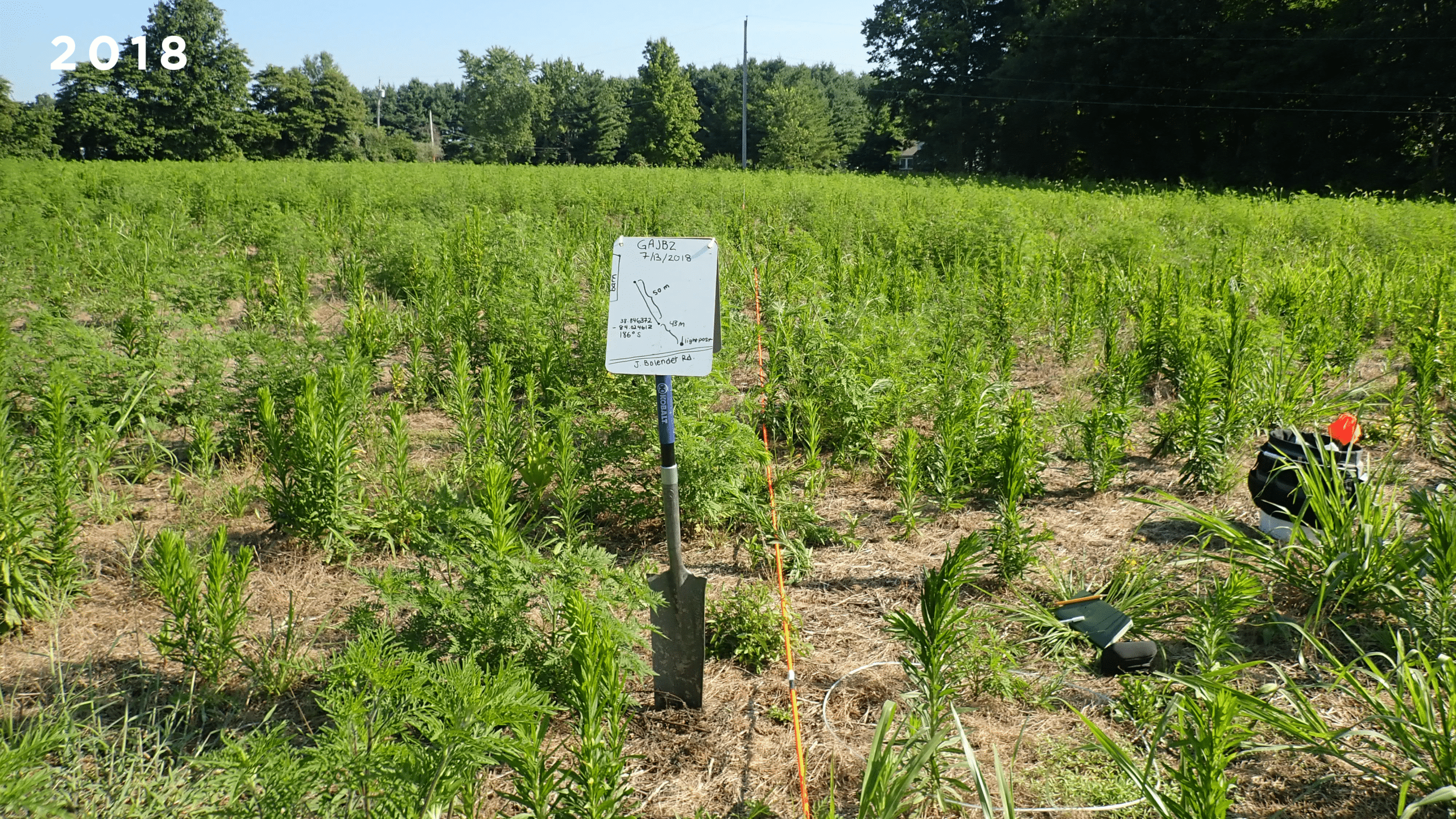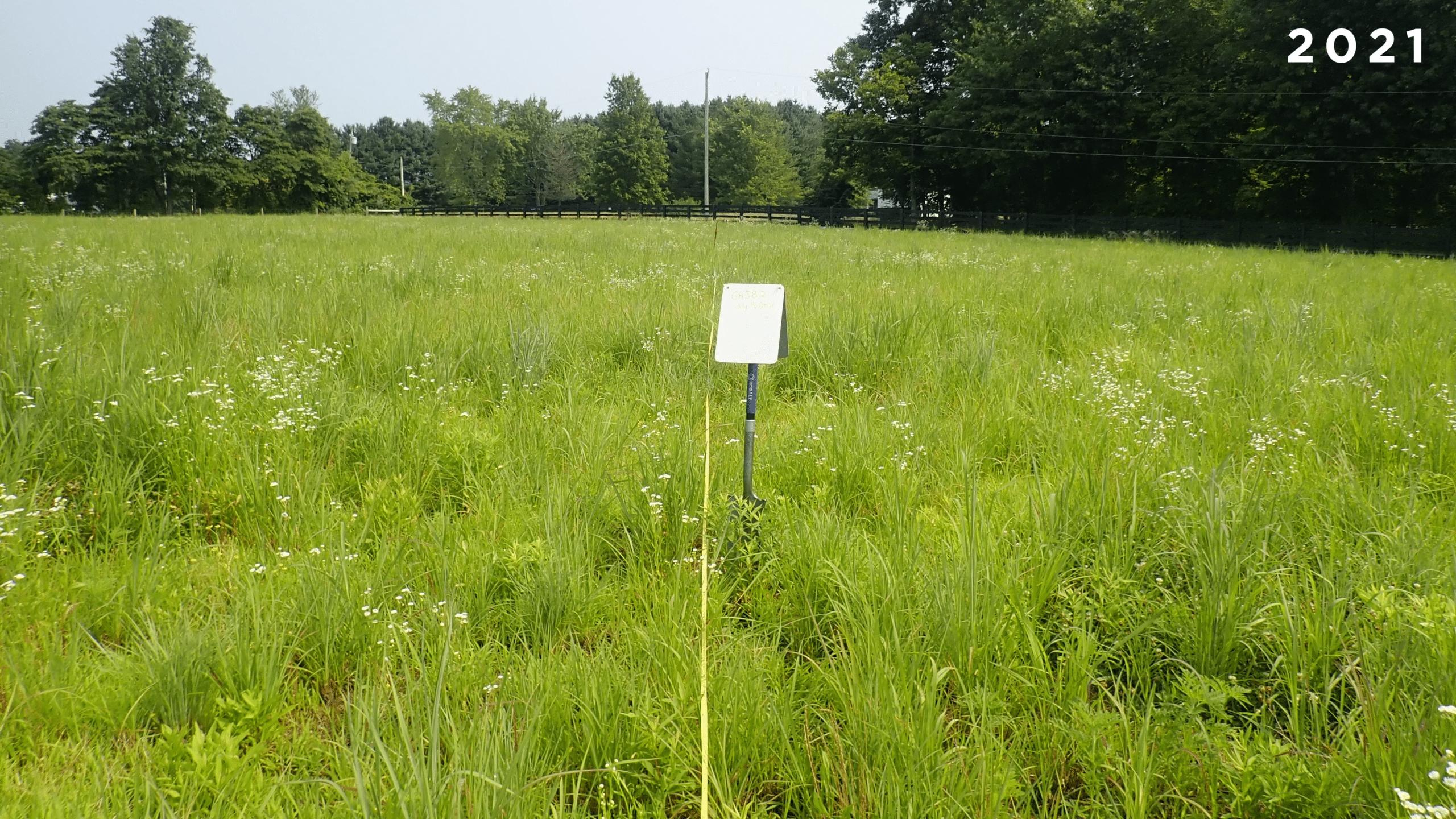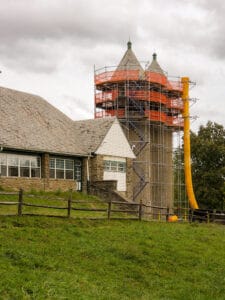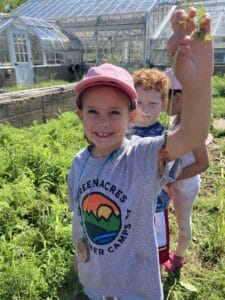Summer 2021 Update
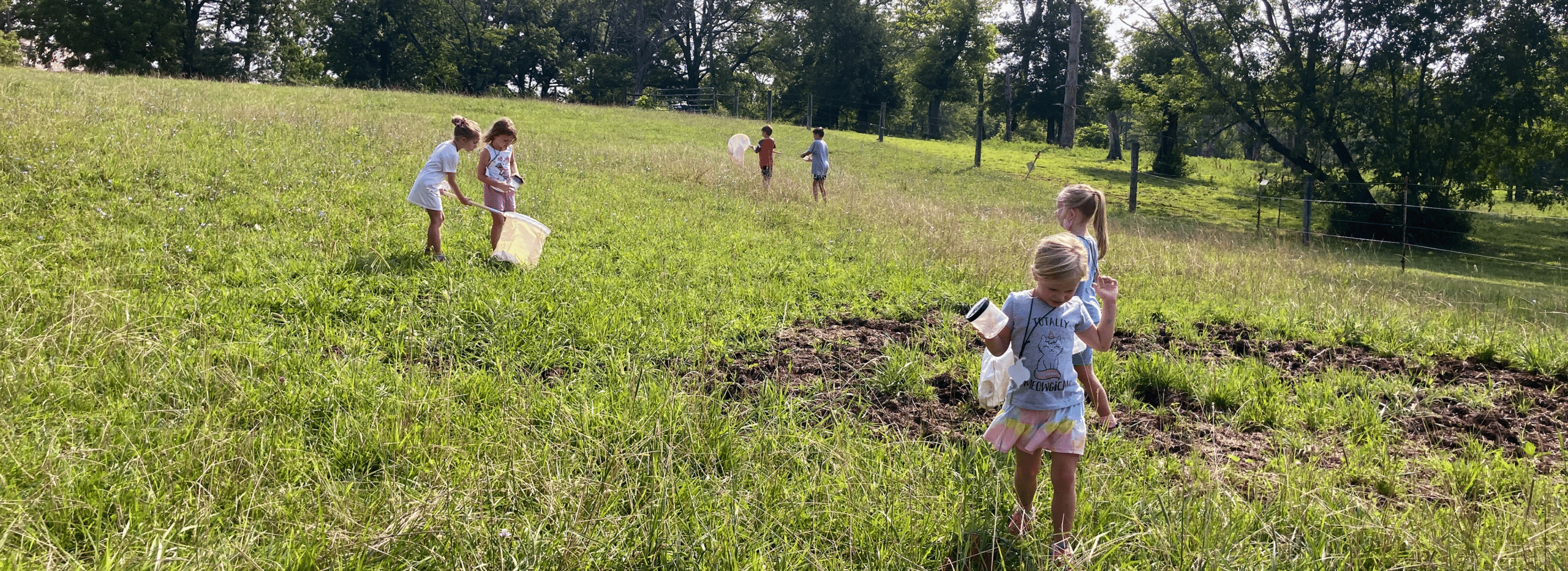
Summer 2021 Update
Pasture Monitoring
Monitoring plays a large role in the research department. In addition to monitoring the woodlands, we also monitor the pastures. Collecting data on soil health and vegetation can inform management decisions made by the livestock team. Data collected include comprehensive soil tests (encompassing the physical, chemical and biological components of soil), water infiltration and compaction. Plant species diversity is measured along with an overall assessment of ecosystem health. Finally, photos document the visual features of the pasture. Continuous improvement in soil health and desired pasture species is the goal. The photo below visually shows the improvement in vegetative cover, species richness and desired species over 3 years. This land was a former soybean field in Brown County and is now a native warm season pasture. We recently developed a comprehensive monitoring schedule for all of our pastures.
Use the image slider to see the 3 year change.
Preserving a Piece of History
Built in mid to late 1920’s as part of the original architecture of the stable facilities, the grain silos at our equine center are an iconic piece of scenery for visitors to the Greenacres Arts Center and Riding Facility. During an annual inspection by our Buildings & Grounds team in June, a number of age related issues affecting the safety of the structures were discovered. “These buildings are in remarkably good shape given their age, however, we did find that certain components were starting to show their age which is nearly 100 years of service. The design, craftsmanship and method of construction was lightyears ahead of their time” says Alex Saurber, Director of Buildings and Grounds. “Our goal is to make sure these buildings continue to withstand the test of time while preserving their historic look. By making these improvements they will remain a unique site for our visitors”.
After careful review and planning, work began in August to restore and replace these critical components. These repairs are expected to be completed before the end of November 2021.
Expanding Flower Production
Flower production on our farm started small in 2019, as a pilot project by Sam Dunbar, Aesthetic Garden Coordinator, when she was a farm intern. Now in her second full season of production, our flower program has grown by leaps and bounds. At Greenacres, we seek to encourage biodiversity, grow organically, and provide quality experiences for our guests – flowers bring together these fundamental tenants of our farm in the most beautiful way. “Most of our vegetable crops rely on pollinators to produce fruit, and interplanting flowers among the vegetables is one of the best ways to encourage pollinators to visit.” says Dunbar, “We plant more flowers than we will harvest, ensuring there’s plenty left for our pollinators to enjoy. Honeybees from our onsite hives are a common sight, busily working away.”
We also plant flowers of different shapes – round, trumpet, umbel shape, etc., encouraging many different kinds of pollinators to visit and build biodiversity. Each species of insect searching for nectar or pollen is seeking a flower shape that suits its specific anatomy and preferences. Hummingbirds like trumpet shapes, bees like round shapes, and wasps prefer umbel shapes. These specific preferences are something our education staff can share with students who visit our gardens.
As with everything in our gardens, our flowers are grown without the use of pesticides, herbicides, or non-organic fertilizers. Flowers from a florist or grocery store may be grown using a wide array of chemical inputs, most of which are detrimental to our environment and pollinators. They’re also typically grown on farms far away and transported thousands of miles to their final destination. Seeking out local flowers can sometimes require a bit more effort, but are well worth the benefits. Customers take home gorgeous flower bouquets while our pollinators and gardens benefit from the increased plant diversity. We’re looking forward to refining and expanding flower production as we enter our third growing season!

“Most of our vegetable crops rely on pollinators to produce fruit, and interplanting flowers among the vegetables is one of the best ways to encourage pollinators to visit.”
-Sam Dunbar, Aesthetic Garden Coordinator
The Magic of Summer Camps
Our 2021 summer season revealed the true magic that camp brings. It seemed even nature itself cheered when little boots, water bottles and tie dye shirts arrived in June! Once Upon a Camp, Fun on the Farm, Nurture Nature, Arts in the Natural World, Gone Fishin’… all camps sold quickly and the waiting lists filled up.
Education Administrative Coordinator, Katie Brown explained, “After the 2020 pause, the heightened interest in Greenacres Summer Camps became clear. Even so, we did commit to maintaining small groups with an average of one Greenacres Educator to five children, putting the safety of our families first.”
With camps returning, it was a great opportunity for local high schoolers to once again build their leadership skills over the summer. 31 local high-school student volunteers for the Greenacres Leaders-in-Training (LIT) Program. Under the guidance of the same Greenacres Educators that host thousands of children for field trips each school year, our LITs learned valuable skills on how to safely run a camps, helping ensure that over 290 children enjoyed a safe and magical summer.
“After the 2020 season pause, the heightened interest in Greenacres Summer Camp became clear. Even so, we did commit to maintaining small groups with an average of one Greenacres Educator to five children, putting the safety of our families first.”
-Katie Brown, Education Administrative Coordinator
Camp magic continues with the release of the 2022 guide before the end of the year and registration to open in early 2022 on our website, https://green-acres.org/camps/ .
A Roost for Turkeys
Our livestock team is always looking for ways to increase the quality of life for the animals we raise at Greenacres. Whether it’s shade structures for our cattle or improved chicken tractors for our broilers, no detail large or small is over looked in the process. Even though turkeys are only on our farm for a short period of time, we treat them with the same care and respect that we give to all of our animals.
Every year after Thanksgiving, our team sits down and reviews what they can do to improve our ability to raise turkeys. “Our turkeys have always had access to clean water, fresh pastures, and the safety of our poultry tractors, but we were overlooking their natural instinct to want to roost” says our Livestock Manager, Leevi Stump. “We looked at our options and decided we could come up with a solution to this challenge before we brought turkeys back onto the farm”. Working with the some of the master welders on our estate crew, a roosting system was designed and construction began in (June?). The build went smoothly and the roosts went out into the field in August waiting for our turkeys to get big enough to use them over the fall. “We think these will go a long ways to making our turkeys more comfortable” says Stump, “it helps protect them from ground predators and lets them exercise that natural instinct to be in trees”.
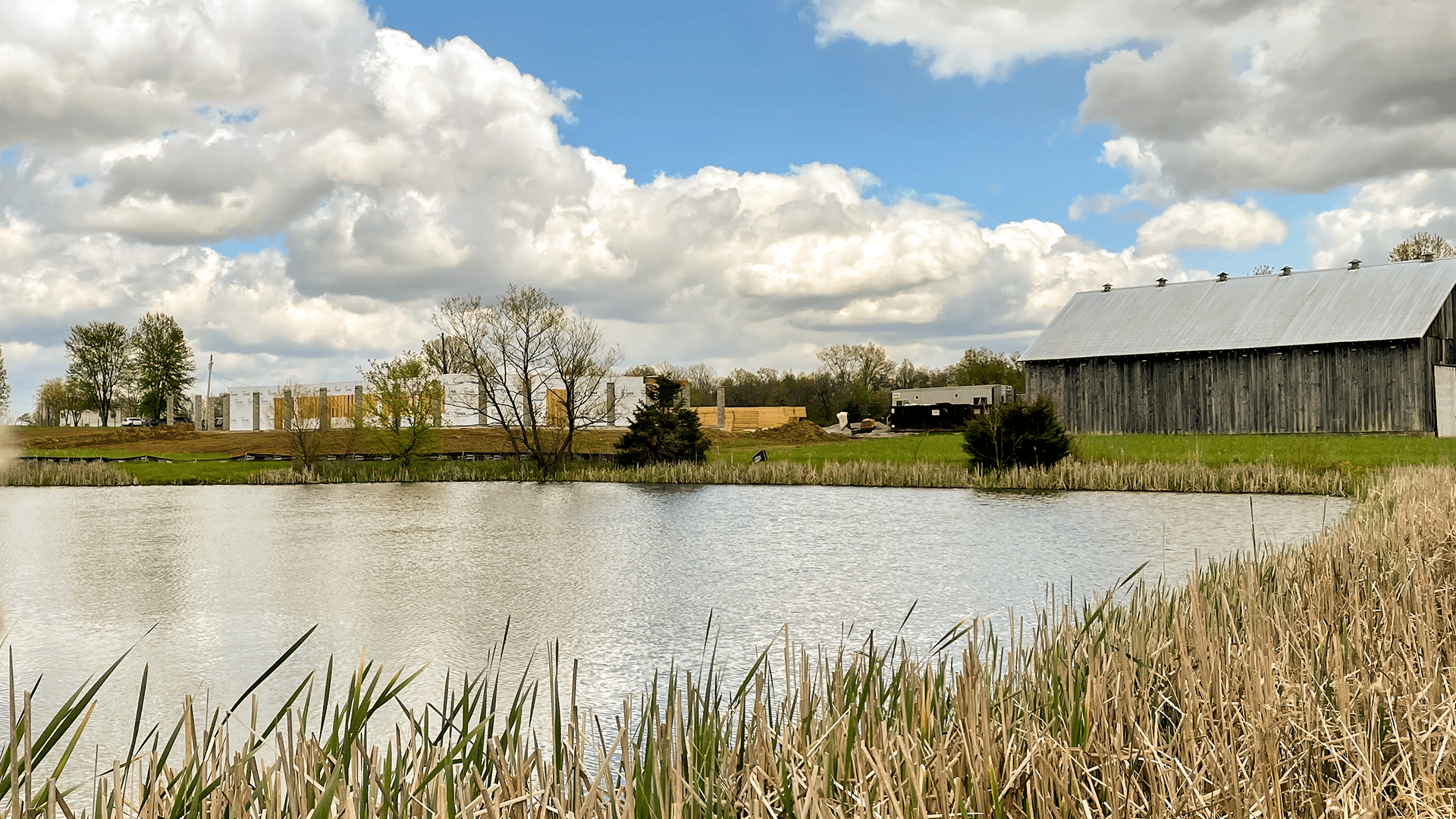
“Our turkeys have always had access to clean water, fresh pastures, and the safety of our poultry tractors, but we were overlooking their natural instinct to want to roost.”
-Livestock person, Livestock person
A Pollinator Garden for the Farm Store
We’ve enjoyed seeing all of you in the Farm Store this summer. The most noticeable change is our new pollinator garden. In late winter, spring, and early summer of this year, a thick, black tarp was covering the landscaping in front of the store. This tarp prevented the growth of the plants underneath, which had become overgrown. The heat and moisture trapped by the tarp also acts to supercharge the biological activity in the soil, helping the microbes break down the decaying plant material underneath, in a process known as ‘solarization’.
When we removed the tarp in early summer, the soil was beautiful and much improved. A layer of our own compost was added, and a thick layer of natural wood chip mulch to retain moisture and suppress weeds. We’ve intermixed native and ornamental perennials and annuals, to provide year-long flowers for the visiting pollinators. Some of the species we’ve planted are also host plants for caterpillars, such as butterfly weed, a type of milkweed that serves as a host plant for Monarch butterfly caterpillars. Over the next few years we will be adding additional perennial species, and mixing in different annuals to see what produces the most beautiful results. We are very grateful to our garden crew for providing such a beautiful and beneficial garden to enjoy.
Summertime Music
Our friends from the Cincinnati Pops Orchestra returned this summer for another great series of “Music Under the Stars” events.. The sellout crowds enjoyed beautiful evenings in July and August listening to members of the Pops play summertime favorites in the gardens at the Arts Center. Late in the summer the entire Cincinnati Pops, and members from the Cincinnati Opera, Cincinnati May Festival, and Cincinnati Ballet, returned for our annual Celebration Concert in the Grand Tent. It was an amazing performance and a perfect cap to end summer.
Between our concerts, we hosted nine weddings from June through September. “We were thrilled to host a full slate of weddings this season after so many couples had to postpone their 2020 wedding dates. We know that was a really tough decision for them, so it was nice to finally see them get to have the event of their dreams.” says Diana Wheeler, Private Events Manager.
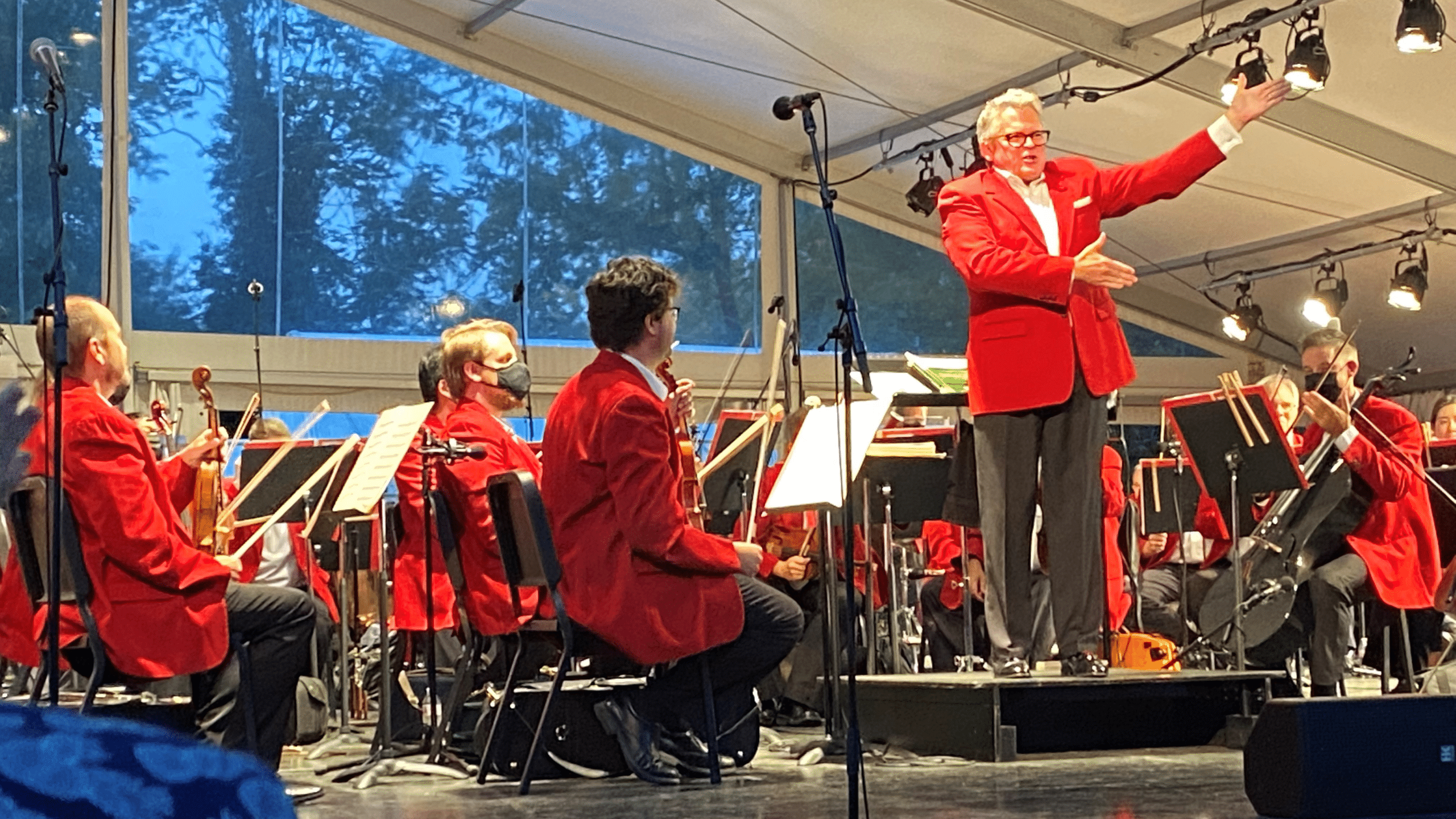
“We were thrilled to host a full slate of weddings this season after so many couples had to postpone their 2020 wedding dates.”
-Diana Wheeler, Private Events Manager
Ohio Native Warm Season Grass Trials
This past summer our Lewis Township site became one of four test sites in Ohio for establishing native warm season grasses under various management regimes. This three year experiment is being coordinated through the Ohio State University under the direction of Dr. Marília Chiavegato. Three different establishment protocols were used representing both conventional and non-chemical management strategies. Big bluestem, Indian grass, eastern gamma grass and switchgrass were planted and their growth and development will be documented. Increased pasture diversity in Ohio is important for ecosystem resilience under a changing climate. “Doing collaborative research with external institutions is extremely important as it allows Greenacres to develop relationships with scientists and experts in fields that support our mission. At the same time it allows Greenacres to share their expertise and promote research and knowledge to a much larger community,” says Research Director Chad Bitler.

“Doing collaborative research with external institutions is extremely important as it allows Greenacres to develop relationships with scientists and experts in fields that support our mission. At the same time it allows Greenacres to share their expertise and promote research and knowledge to a much larger community”
-Chad Bitler, Research Director

